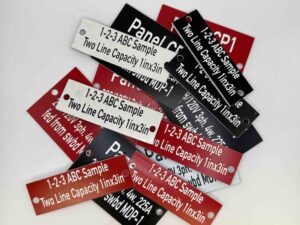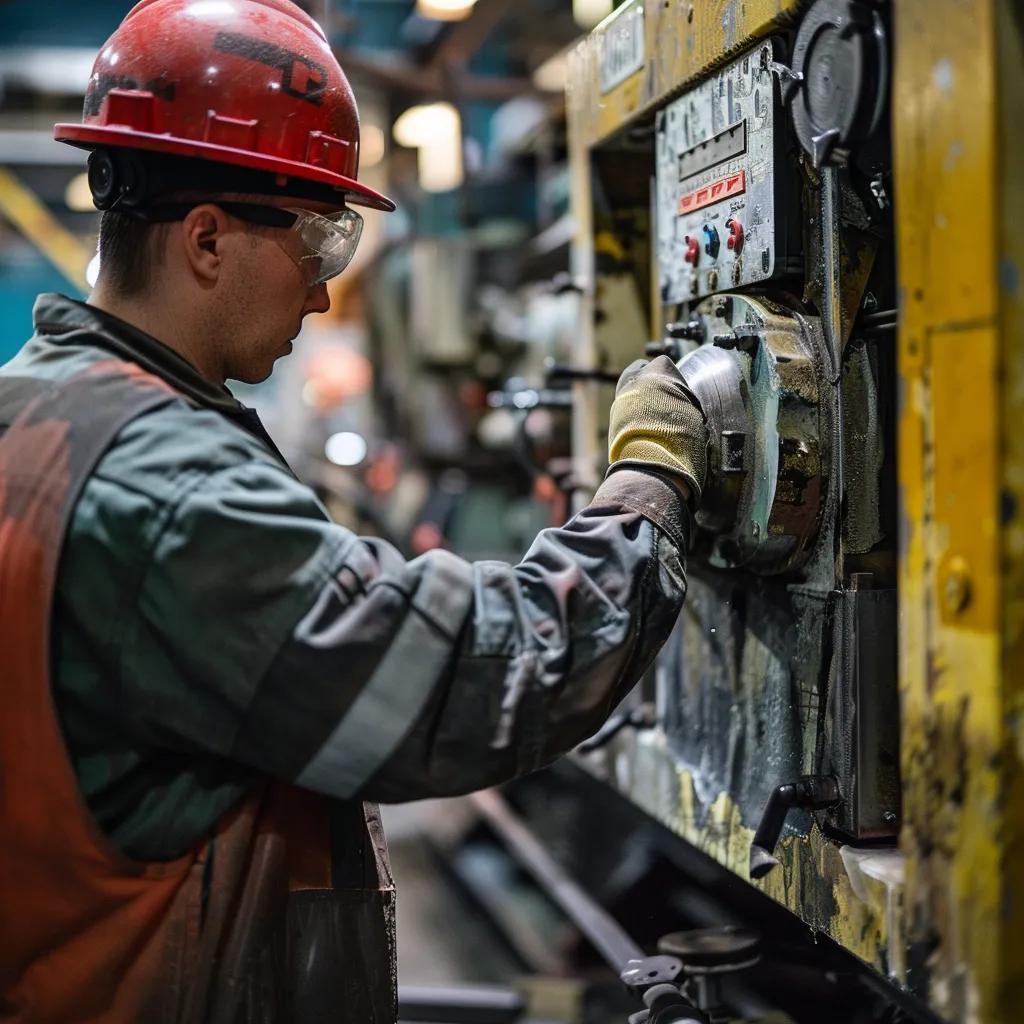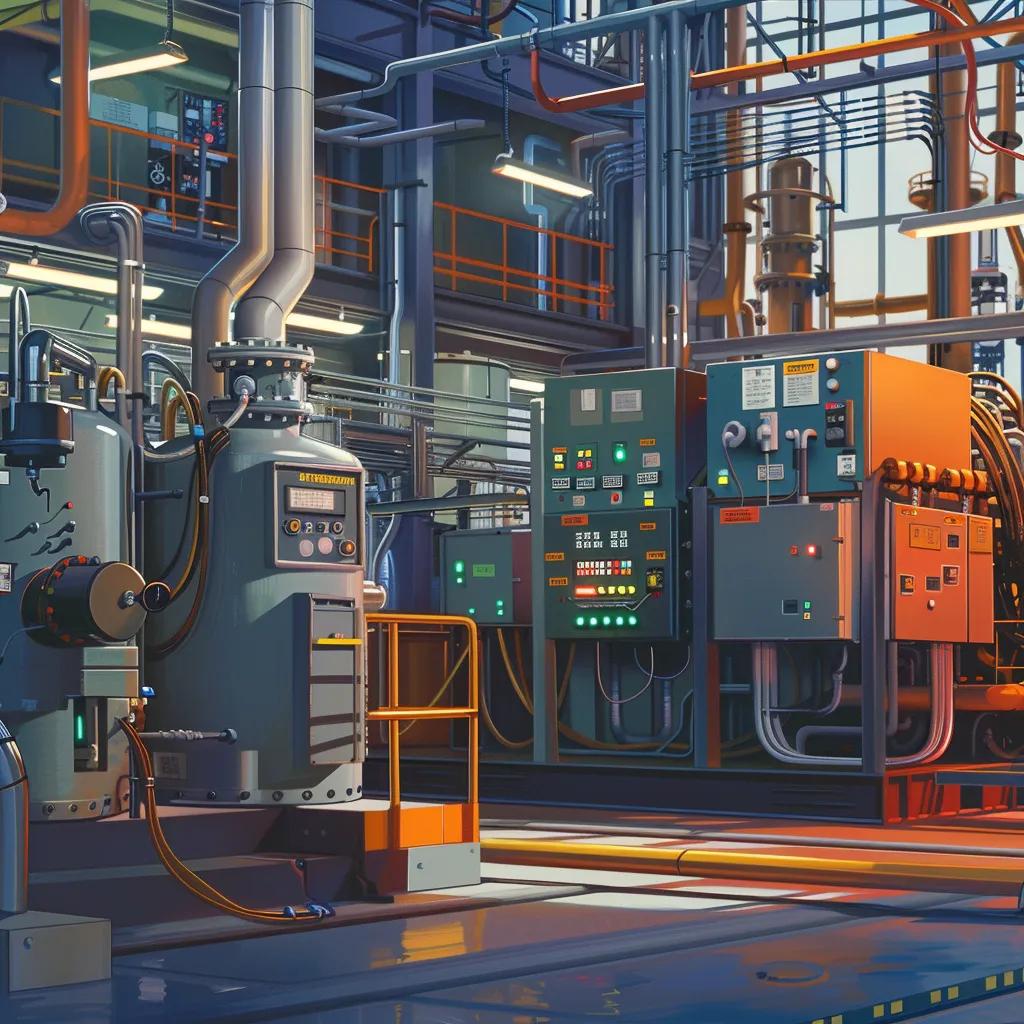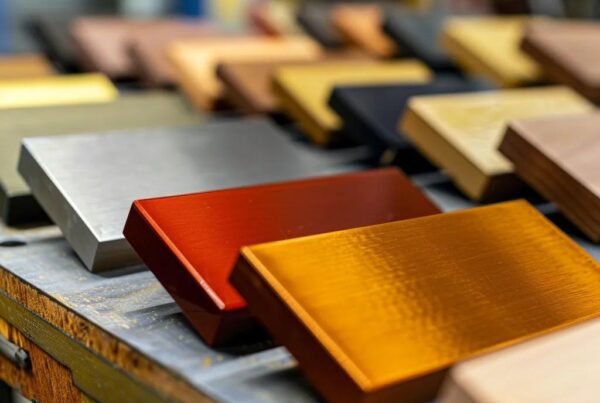Discover the Advantages of Phenolic Plastic for Nameplates: Benefits, Properties, and Applications

Phenolic plastic nameplates deliver unmatched longevity and reliability in the toughest industrial settings, reducing replacement cycles by up to 50% compared to standard acrylic options. Readers will learn how this thermoset composite combines superior durability, electrical insulation, chemical resistance, and customization flexibility to solve identification challenges on machinery, panels, and safety equipment. This article defines phenolic plastic, explores its mechanical and electrical properties, compares it with other materials, outlines customization techniques, examines cost-benefit trade-offs, addresses environmental considerations, reviews industry standards, and guides decision-making for selecting the optimal nameplate solution. Commercial cleaning specialists such as Freedom Cleaning Solutions also benefit from phenolic nameplates that stay legible and intact during routine maintenance and sanitization cycles.
What Is Phenolic Plastic and Why Is It Ideal for Nameplates?
Phenolic plastic is a thermosetting laminate formed by curing phenol-formaldehyde resin under heat and pressure, creating a rigid, cross-linked matrix that resists deformation and environmental stress. This cured structure offers high dimensional stability, making phenolic laminates ideal for engraved nameplates that must maintain clarity and adhesion over years of mechanical wear or chemical exposure. For example, valve tags in chemical plants remain readable after hundreds of cleaning cycles, ensuring safety and compliance.
What Are the Key Properties of Phenolic Plastic?

Phenolic laminates exhibit a unique combination of mechanical and chemical attributes:
- Mechanical Rigidity: A fully cured network resists bending, cracking, and breakage under impact.
- Abrasion Resistance: Hard surfaces withstand scratching from tools and brushes.
- Thermal Stability: Maintains structural integrity from –40 °C to +150 °C.
- Chemical Resistance: Impervious to acids, solvents, oils, and most cleaning agents.
- Electrical Insulation: High dielectric strength prevents current leakage on electrical panels.
Phenolic Plastic Properties
Phenolic plastics are known for their high mechanical rigidity, resistance to abrasion, and thermal stability, making them suitable for demanding industrial applications. These properties are a result of the thermosetting process, which creates a strong, cross-linked polymer matrix that resists deformation and environmental stress. phenolic labels orlando
This source provides a general overview of the properties of phenolic plastics, which supports the article’s description of the material’s characteristics.
How Does Phenolic Plastic Compare to Other Nameplate Materials?
Below is a comparison of phenolic, acrylic, and metal nameplates using critical attributes:
Material Comparison
Compared to acrylic and metal, phenolic plastic offers a balanced profile of mechanical toughness, chemical stability, and electrical safety at a mid-range cost. Acrylic is prone to scratches and cracks, while metal can be conductive and expensive, especially when considering the need for protective coatings.
This citation provides a comparison of different materials, which supports the article’s discussion of the advantages of phenolic plastic over other materials.
What Are Common Industrial Applications of Phenolic Nameplates?

Phenolic laminates find use across sectors where durability and safety matter:
- Electrical Panels: Non-conductive markers for breakers and switchgear.
- Chemical Processing: Valve tags and control plate labels in corrosive environments.
- Heavy Machinery: ID plates on pumps, compressors, and gearboxes.
- Laboratory Equipment: Permanent serial tags on analytical instruments.
- Outdoor Signage (specific grades): UV-stabilized laminates for warning signs.
How Does Phenolic Plastic Ensure Superior Durability for Nameplates?
Phenolic’s cured polymer network resists mechanical and environmental damage that rapidly degrades other substrates, ensuring nameplates remain intact and legible throughout their service life.
What Makes Phenolic Plastic Resistant to Abrasion and Impact?
Phenolic laminate’s composite structure—resin impregnated into cellulose or glass fabric—creates a dense, hard surface that withstands repetitive abrasion and impact. Laboratory scratch tests demonstrate that phenolic endures up to three times more cycles than acrylic before surface failure.
How Does Phenolic Plastic Perform Against Chemical Exposure?
Phenolic nameplates resist most industrial chemicals through a cross-linked phenol-formaldehyde matrix that prevents solvent penetration. Common corrosive agents such as sulfuric acid, trichloroethylene, and hydraulic oils cannot degrade the resin, preserving identification in chemical plants and automotive service bays.
What Is the Heat and Temperature Resistance of Phenolic Nameplates?
Phenolic laminates remain dimensionally stable from –40 °C to +150 °C, thanks to a glass transition temperature above 130 °C. This thermal stability prevents warping or delamination on equipment that cycles through hot and cold processes, such as ovens, boilers, and refrigeration units.
How Long Do Phenolic Nameplates Typically Last in Harsh Environments?
In field applications, phenolic nameplates often exceed 10–15 years of service without significant fading or damage. This lifespan doubles that of acrylic under equivalent exposure, delivering substantial replacement-cycle savings and minimizing downtime for maintenance.
What Electrical Insulation Benefits Do Phenolic Nameplates Provide?
Phenolic plastic’s dielectric properties make it inherently non-conductive, safeguarding operators and equipment from electrical hazards. phenolic labels orlando
Why Is Phenolic Plastic Non-Conductive and Safe for Electrical Use?
The cured phenolic matrix contains no free electrons or conductive fillers, yielding dielectric strengths up to 1.2 kV/mm. This non-conductivity prevents short circuits when mounted on live panels, ensuring clear identification without compromising safety.
How Are Phenolic Nameplates Used in Electrical Panels and Equipment?
Panels for circuit breakers, relays, and transformers employ engraved phenolic labels for terminal identification, wiring diagrams, and safety warnings. The insulation allows direct mounting on bus bars or energized surfaces without additional standoffs.
What Standards Govern Electrical Insulation Properties of Phenolic Materials?
Phenolic laminates typically conform to NEMA Grade FR-4 or G-10 specifications and meet IEC 60893-3 dielectric requirements. MIL-SPEC MIL-C-23958 also outlines performance criteria for military-grade phenolic sheets used in avionics and ground equipment.
Industry Standards
Phenolic laminates often conform to NEMA Grade FR-4 or G-10 specifications and meet IEC 60893-3 dielectric requirements. These standards ensure that the material meets specific performance criteria for electrical insulation and other properties, which is crucial for safety in electrical applications.
This citation supports the article’s claims about industry standards and certifications, which are important for ensuring the quality and safety of phenolic plastic nameplates.
How Can Phenolic Plastic Nameplates Be Customized and Engraved?
Precision engraving and flexible design options make phenolic an ideal substrate for custom identification solutions.
What Engraving Techniques Are Best for Phenolic Plastic?
Rotary engraving yields crisp, deep-relief text on standard phenolic sheets, while specialized laser-embossable phenolics allow clean, high-contrast marking. Rotary methods produce permanent recess that resists wear, and laser engraving offers fine detail on UV-stable grades.
How Do Custom Shapes, Sizes, and Colors Enhance Phenolic Nameplates?
Fabricators can cut phenolic into complex contours, slots, or mounting tabs to match equipment geometry. A palette of core and face-stock colors—black, red, white, and safety yellow—enables brand-aligned or hazard-coded signage that stands out and remains readable.
What Are the Advantages of Permanent Markings on Phenolic Nameplates?
Permanent engravings maintain readability under friction, repeated chemical cleaning, and UV exposure, eliminating the need for periodic re-labeling. This permanence ensures compliance with safety regulations and reduces lifecycle maintenance.
What Are the Cost and Value Benefits of Choosing Phenolic Plastic for Nameplates?
A lifecycle cost analysis shows that phenolic’s upfront cost is offset by extended service life and reduced replacement and maintenance expenses.
How Does Phenolic Plastic Offer Long-Term Cost Savings?
- Extended Lifespan: Fewer replacements cut procurement and labor costs.
- Reduced Downtime: Durable markings decrease maintenance interruptions.
- Cleaning Efficiency: Resistance to solvents allows faster, harsher cleaning without damage.
These savings often deliver a 20–30% lower total cost of ownership compared to acrylic or printed metal tags.
How Does Phenolic Compare to Acrylic and Metal in Price and Performance?
What Are Typical Purchase and Maintenance Considerations?
When specifying phenolic nameplates, evaluate sheet thickness (0.5–3 mm), face-stock color, adhesive or hardware mounting, and engraving depth. Routine visual inspections suffice; no specialized cleaning agents or protective coatings are required.
What Are the Environmental and Outdoor Use Considerations for Phenolic Nameplates?
Phenolic laminates perform reliably under UV, moisture, and temperature extremes when properly formulated.
Is Phenolic Plastic Suitable for Outdoor and UV-Exposed Applications?
Certain UV-stabilized grades feature lightfast pigments and resin additives that resist fading and chalking under sunlight. While standard phenolic excels indoors, outdoor-rated sheets ensure up to five years of sun exposure without significant discoloration.
How Does Phenolic Plastic Perform in Chemical and Harsh Environmental Conditions?
Phenolic’s resistance extends to salt spray, acids, alkalis, and industrial solvents, making it a preferred choice for marine signage, wastewater facilities, and food-processing lines where aggressive sanitation protocols are common.
Are There Eco-Friendly Phenolic Plastic Options for Nameplates?
Manufacturers offer phenolic laminates with recycled fiber fillers and phenol-formaldehyde resins derived from bio-based phenolic sources, reducing environmental impact while retaining performance.
What Industry Standards and Certifications Support Phenolic Plastic Nameplates?
Rigorous standards ensure phenolic laminates meet safety, performance, and material quality benchmarks.
Which NEMA and MIL-SPEC Standards Apply to Phenolic Laminates?
- NEMA LI 1/LI 2: Defines general industrial phenolic and melamine processes.
- MIL-C-23958: Covers marine and avionics-grade laminates for defense applications.
How Do ASTM and Other Testing Protocols Ensure Quality?
ASTM D 709 for abrasion resistance, ASTM D 149 for dielectric breakdown, and ASTM D 648 for thermal deflection provide quantifiable benchmarks. Certified laboratories verify compliance before material release.
What Case Studies Demonstrate Phenolic Nameplate Performance?
A chemical plant retrofit replaced acrylic tags with phenolic laminates, eliminating nameplate failures and saving $15,000 in annual downtime costs. In another example, an electrical OEM extended panel label service life by 60%, enhancing maintenance schedules and safety audits.
What Are Common Questions About Phenolic Plastic Nameplates?
Professionals selecting identification solutions often focus on phenolic’s mechanical strength, electrical safety, chemical resistance, customization options, and outdoor suitability. Clarifying these topics early accelerates specification and procurement.
What Are the Primary Advantages of Phenolic Plastic for Nameplates?
Phenolic plastic combines high abrasion and impact resistance, excellent dielectric strength, and broad chemical stability to deliver durable, legible nameplates in industrial and electrical environments.
How Does Phenolic Plastic Compare to Acrylic for Nameplates?
Compared with acrylic, phenolic offers significantly higher heat tolerance, superior solvent resistance, and deeper, permanent engraving without surface cracking.
Can Phenolic Nameplates Withstand Harsh Chemicals and Heat?
Yes. Cross-linked phenolic laminates resist concentrated acids, solvents, oils, and continuous exposure up to 150 °C, ensuring legibility in corrosive and high-temperature processes.
Are Phenolic Nameplates Suitable for Electrical Safety Applications?
Absolutely. With dielectric strengths exceeding 1 kV/mm and zero conductivity, phenolic nameplates can be mounted directly on live components for clear, safe identification.
How to Choose the Right Phenolic Plastic Nameplate for Your Needs?
Selecting the optimal phenolic nameplate requires matching material grade, engraving method, and form factor to the intended application.
What Factors Should You Consider When Selecting Phenolic Nameplates?
Evaluate environmental exposure (UV, chemicals, temperature), mechanical stress (abrasion, impact), electrical safety requirements, desired color and finish, and mounting method to specify the appropriate phenolic grade and thickness.
How to Match Phenolic Nameplates to Specific Industry Applications?
- Electrical Panels: Use G-10 or FR-4 grade with laser-printable face stock.
- Chemical Plants: Choose high-chem resistance laminates with rotary engraving.
- Outdoor Signage: Opt for UV-stabilized black face-stock grades.
Where to Buy High-Quality Phenolic Plastic Nameplates?
For precision laser-engraved solutions, see our options for laser engraved phenolic tags offering a range of colors, thicknesses, and mounting styles to suit any industrial application.
Phenolic plastic nameplates deliver a rare combination of toughness, stability, and longevity that outperforms competing materials in demanding environments. By understanding the core properties, customization options, cost-value trade-offs, and relevant standards, decision-makers can specify nameplate solutions that minimize downtime, enhance safety, and reduce total lifecycle costs. Choosing the right grade and engraving technique ensures clear, permanent identification under abrasion, chemical exposure, and electrical stress. With proven field performance and a broad array of formulations, phenolic laminates remain the benchmark for industrial nameplate excellence.





